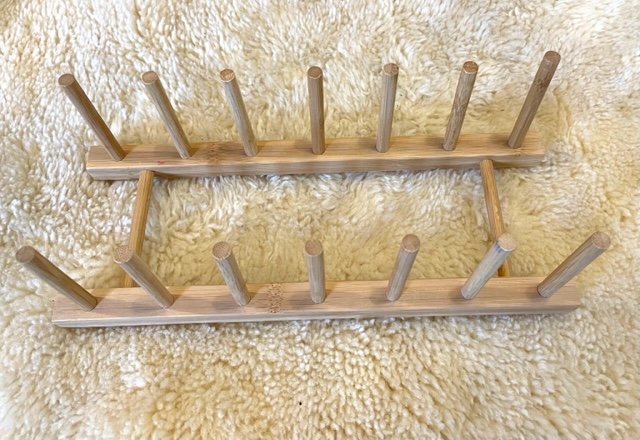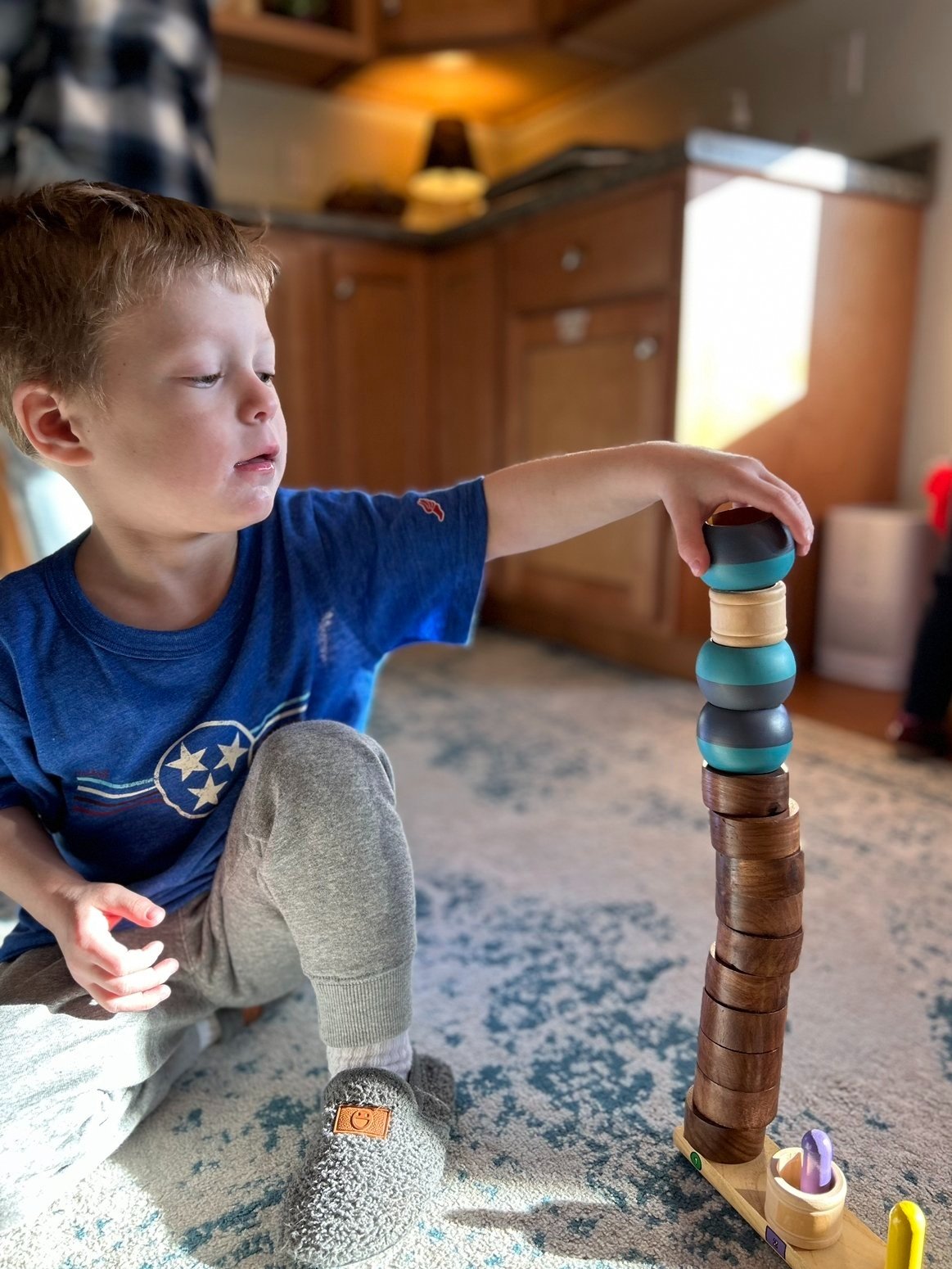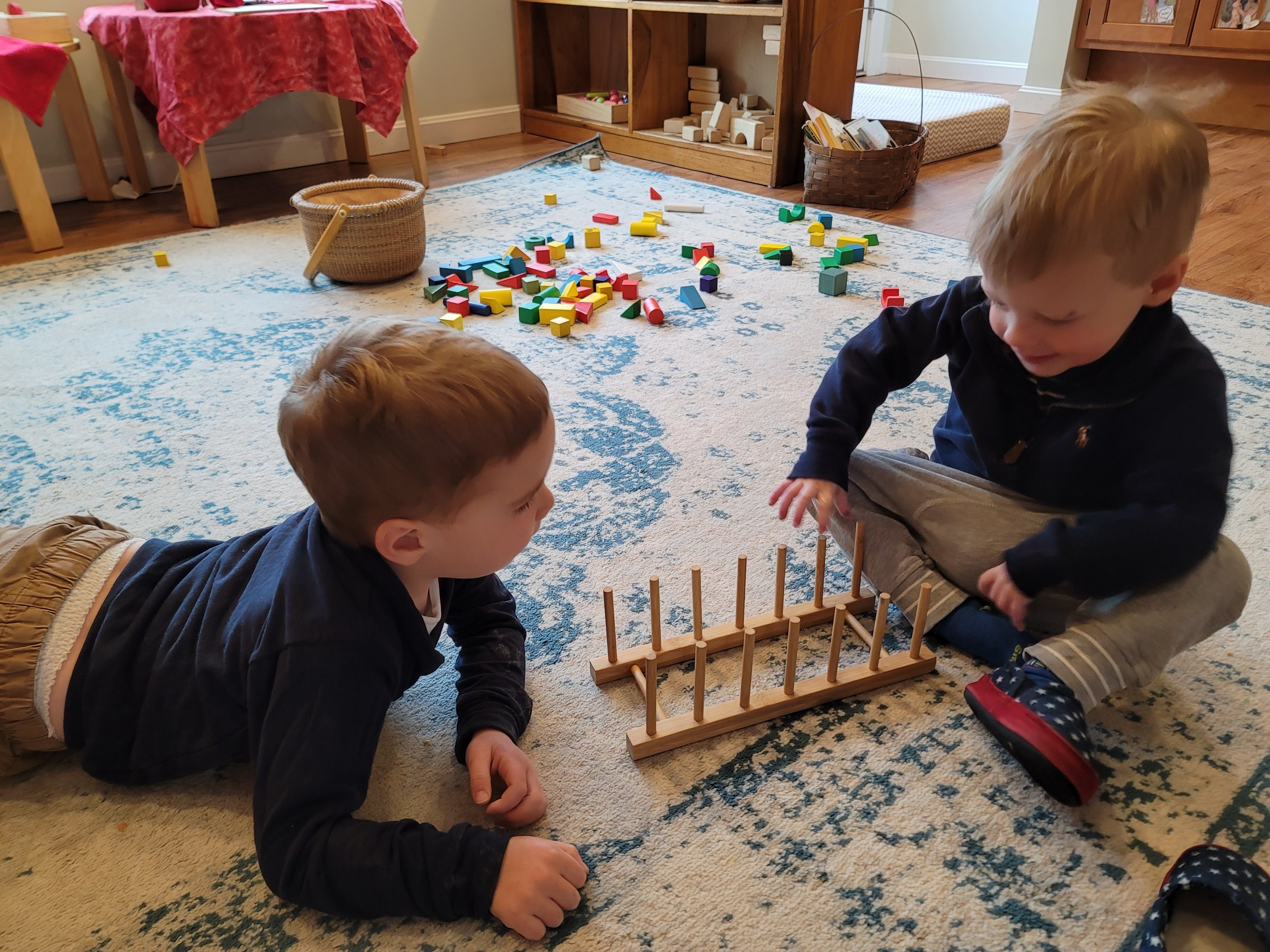THE LEARNING HAPPENING AT OUR FEET
Observing Play Schemas Through Simple Materials
Learning never ends at Harmony—both for our teachers, and the children who arrive here to play each day. Throughout the year, as part of our Harmony Approach to individualized, play-based learning, we are constantly rotating the play materials in each classroom, and love to silently introduce new, basic items to observe how the children choose to interact with them. Though it may sound simple—and of course, everything we do at Harmony is rooted in simplicity—each child approaches objects through his or her own lens, and as we observe this, we not only get a window into their perspective and what they are learning, we watch their play inspire new play ideas among the other children, while also inspiring us to incorporate additional items that build on their learning.
Case in point: we recently tucked a wooden plate holder and a set of wooden napkin rings between on the play shelves of different Harmony classrooms. These “found objects”—aka, non-toy items—may not look like much to the average adult, but to 2- and 3-year-olds, they bring endless, individualized fascination and reveal each child's play schemas...
Play Schemas—How Your Children Learn
Young children make sense of the world around them through repetitive activities, or play schemas, which they update and adjust over time as they learn. Schemas are instinctual developmental motivations in children’s play that can be observed across cultures and environments. A child may be drawn to a dominant play schema, or engage in multiple play schemas at the same time.
Stacking & Building—the Connecting Play Schema
On its own, the plate holder perplexed some of the children—they weren’t quite sure what to do with it.
The first two Transitional Preschoolers who noticed the napkin rings and plate holder simultaneously combined them, stacking the rings on the prongs of the plate holder. Though these children were in separate classrooms on separate days, each had the same inherent instinct.
“How many are there?” one boy wondered aloud, and proceeded to build a precariously tall tower atop the tiny peg. His balancing exercise was a simple physics lesson in action.
The stacking, building, and disconnection all represented the Connecting Play Schema.
Movement and Rolling—the Trajectory and Rotation Play Schemas
Another day, another child discovered the rings’ movement and rollability, as he tossed and sent ring after ring in motion across the rug. He engaged in two completely different basic physics lessons through the exploration of the Trajectory Play Schema, which studies the (typically airborne) movement of objects, and the Rotation Play Schema, which examines anything circular that rotates.
Counting—part of the Positioning Play Schema
Two toddlers considered the plate holder by itself. “Train station!” one said, while the other endeavored to count the pegs. Arranging items in a line, or even counting basic items, are part of the Positioning Play Schema.
Defining Boundaries—the Enclosing Play Schema
Another little boy dumped some colored blocks and began sorting, using the plate holder as a space-defining container—a great example of the boundary-creating Enclosing Play Schema (very similar to the Enveloping Play Schema, which completely wraps play items).
Reflecting on Play-Based Learning Styles
When our teaching teams regrouped to share these photos and schematic play observations, we agreed that a future play invitation should present small fabric strips and large beads with the wooden rings to perhaps inspire weaving, bead-threading, and…we’ll see what else… With the simplest materials, the cycles of play are endless and ever-evolving!
Observing Play Schemas at Home
As busy parents, it’s so easy to completely miss that these deep learning activities are happening literally beside our feet—and that’s completely fine! Our children’s learning will occur with or without our awareness—and in fact, without our intervention, it’s arguably a better experience for our children, as they can complete their entire scientific learning process on their own.
If you want to boost your child’s process of learning through play, your best move is to wordlessly integrate simple “found objects” into play areas and quietly observe while you fulfill your mountain of daily parenting and life activities. You may notice one or more of the above play schemas in action, or an entirely different one.
We hope this has inspired you to consider your child’s play through new eyes, and both marvel at and take pride in the subtle yet earthshaking scientific discoveries happening around you every day.
We’d love to see any Harmony-inspired moments you capture along your child’s early years journey. Tag us (@HarmonyNLC) on Facebook and Instagram, and use the hashtags #HarmonyNaturalLearningCenter #TheHarmonyApproach #HarmonyNLC
______________________________
Interested in introducing more of The Harmony Approach to your preschooler at home? Check out Harmony at Home today (FREE activities available).








